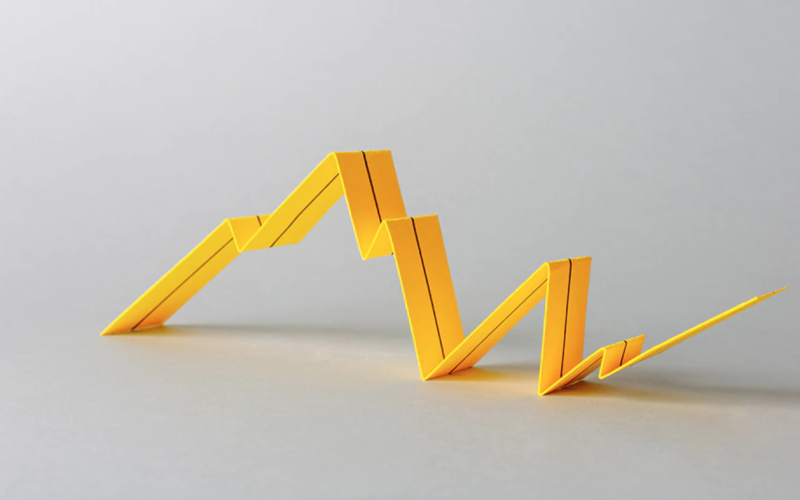by Jeffrey Kleintop, CFA®, Managing Director, Chief Global Investment Strategist, Charles Schwab & Co., Inc.
Key Points
- After a year of supply shortages, the global economy may be closer to the end of the supply chain problems than the beginning.
- As a leading economic indicator, markets tend to look six-to-12 months ahead; they may soon begin to consider the possibility that some shortages may have started to ease, and gluts may have started to form by the second half of next year.
- If supply gluts begin to emerge late next year, manufacturing inputs like semiconductors, finished goods such as cars, and even containerships themselves may see supply outrun demand, easing inflation pressures.
A surplus of goods and materials seems a long way off at the present. Supply shortages, lifting inflation and slowing production, endured all year as strong demand outstripped supply and have been worsened by supply chain logjams.
Yet, history shows us that shortages often lead to gluts. Should a supply glut emerge in 2022, it may lead to a fall in inflation as excess inventory prompts price cuts. This complicates central bankers’ tasks and helps explain their very slow steps towards ending pandemic-era policies. If they view the shortages as transitory, they want to be careful when raising interest rates to cool inflation pressures as a potential glut of supply also may begin to weigh on prices in the year ahead.
From boom to bust
The speed at which shortages can turn into gluts can be rapid, as seen in last year’s share price and earnings estimates for the world’s biggest maker of disposable gloves. The pandemic created a shortage of personal protection equipment (PPE) in the first half of 2020; Malaysia’s Top Glove, the world’s biggest maker of rubber gloves, saw its earnings prospects and stock price soar. Analysts’ earnings estimates jumped by 1400% and the stock price rose by over 400%. By mid-year, production had caught up. By the time vaccines were announced in the fourth quarter, customer inventories were overstocked. As demand began to return to normal, earnings forecasts plunged, resulting in the stock giving up nearly all of its gains.
2020’s PPE Plunge

Source: Charles Schwab, Factset data as of 11/7/2021.
In 2021, we have seen that boom-and-bust pattern play out again, this time in the coal market. Widespread coal shortages, especially in China, drove up the price of coal futures and the stock prices of mining companies for much of this year. In October, China responded by announcing measures to increase coal production, including approvals for new mines, in an all-out effort to boost supply. These actions led to a crash in coal prices that brought down the stocks of mining companies at the same time.
2021’s Coal Crash

Source: Charles Schwab, Bloomberg data as of 11/7/2021. Past performance is no guarantee of future results.
Closer to the end than beginning
In the past, the markets seem to have moved suddenly from a shortage to a glut. After a year of supply shortages, we may be closer to the end of the supply chain problems than the beginning. As a leading economic indicator, markets tend to look six-to-twelve months ahead; they may soon begin to consider the possibility that some shortages may have started to ease, and gluts may have started to form by the second half of next year. Should a glut begin to emerge by late next year, manufacturing inputs like semiconductors, finished goods such as cars and phones, and even containerships themselves may see supply outrun demand.
• Semiconductors - The semiconductor industry is capital intensive and semiconductors themselves have a relatively short life: a perfect scenario for frequent boom-and-bust cycles. The stocks of these companies tended to lead the downturns in sales and fall sharply on signs of inventories rebuilding, with a typical timeframe being a few quarters ahead of a sales’ downturn. Already, there are signs that shortages are easing. The delivery time for chips increased in October by the smallest amount in some nine months suggesting a turn may be near, according to research by Susquehanna Financial Group. On their earnings calls, the two biggest European automakers, VW and Stellantis voiced optimism that the worst quarter of semiconductor shortages and the worst of the supply issues that have slowed production globally have passed. Similar comments were made by GM and Ford. According to market research firm IDC, the semiconductor industry is expected to return to balance by the middle of next year, with potential overcapacity in 2023 as large capacity expansions begin to come online by the end of next year. Major manufacturers, including Intel, Samsung, and TSMC, have plans to expand their chipmaking facilities. President Biden’s “China bill”, having already passed the Senate, includes a $50-billion subsidy for the U.S. semiconductor industry, mirroring China’s heavy investment in new factories that will allow it to increase its own chip production.
Semiconductor boom-and-bust cycles

Source: Charles Schwab, Bloomberg data as of 11/7/2021.
• Finished goods - Many finished items in short supply now may become widely available once the inputs (including chips) arrive. Auto manufacturers are building partially completed cars, storing them until final inputs arrive. It's reasonable to consider that this may be the case for other consumer durable goods like gaming consoles and phones. This scenario suggests finished output could take off when key components become available.
• Containerships – The containerships that carry goods along the world’s ocean trade routes can also see shortages and gluts. An incredible surge in orders for new containerships in 2021 has come after the trade war slowdown for new orders in 2016-2020.
New orders for containerships

Orders for containerships able to carry more than 5000 Twenty-Foot Equivalent Units (TEUs).
Source: Charles Schwab, Bloomberg data as of 11/5/2021.
What to watch
Before falling sales numbers are reported, inventories begin to build up—so that is an important thing to watch for signs of investor risk. Stocks tend to react at the first sign of inventory building which we believe is unlikely to happen until sometime next year. Perhaps excess inventory is sitting at ports right now or, more likely, on order books (there may be some over-ordering taking place). While shortages can create problems, gluts can be worse. The risk of a supply glut in 2022 pulling down stock prices and depressing inflation could be one of the biggest risks for investors.














